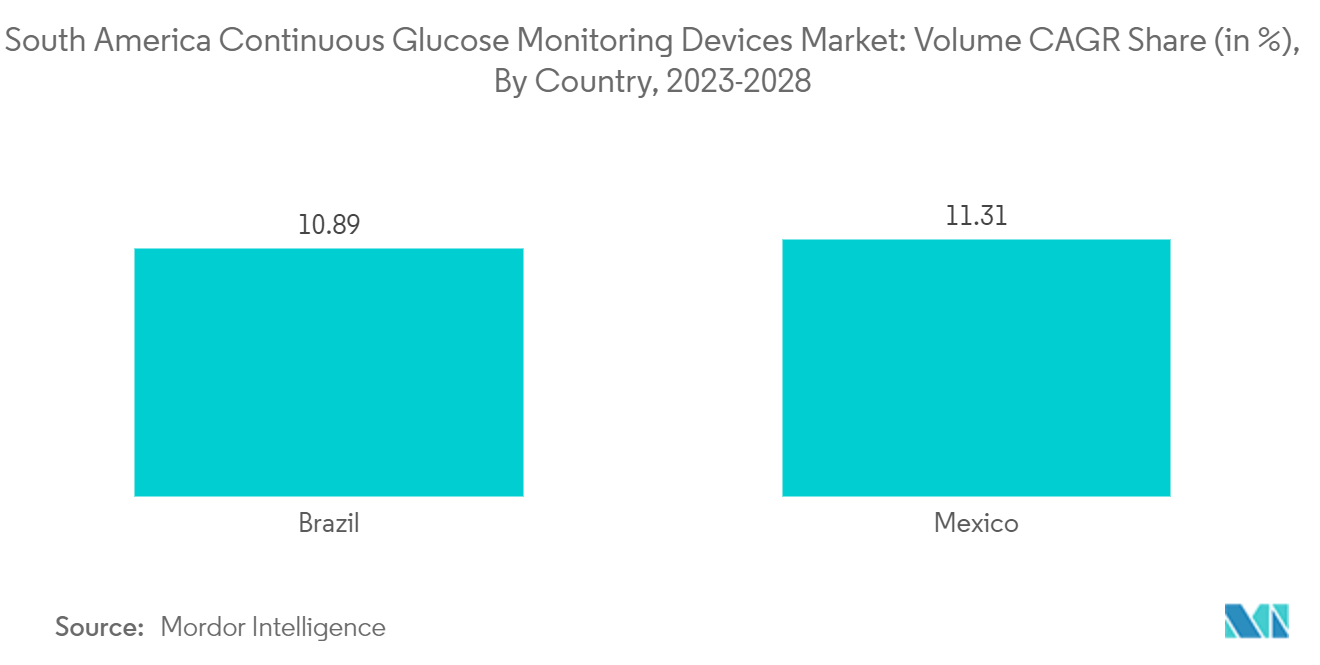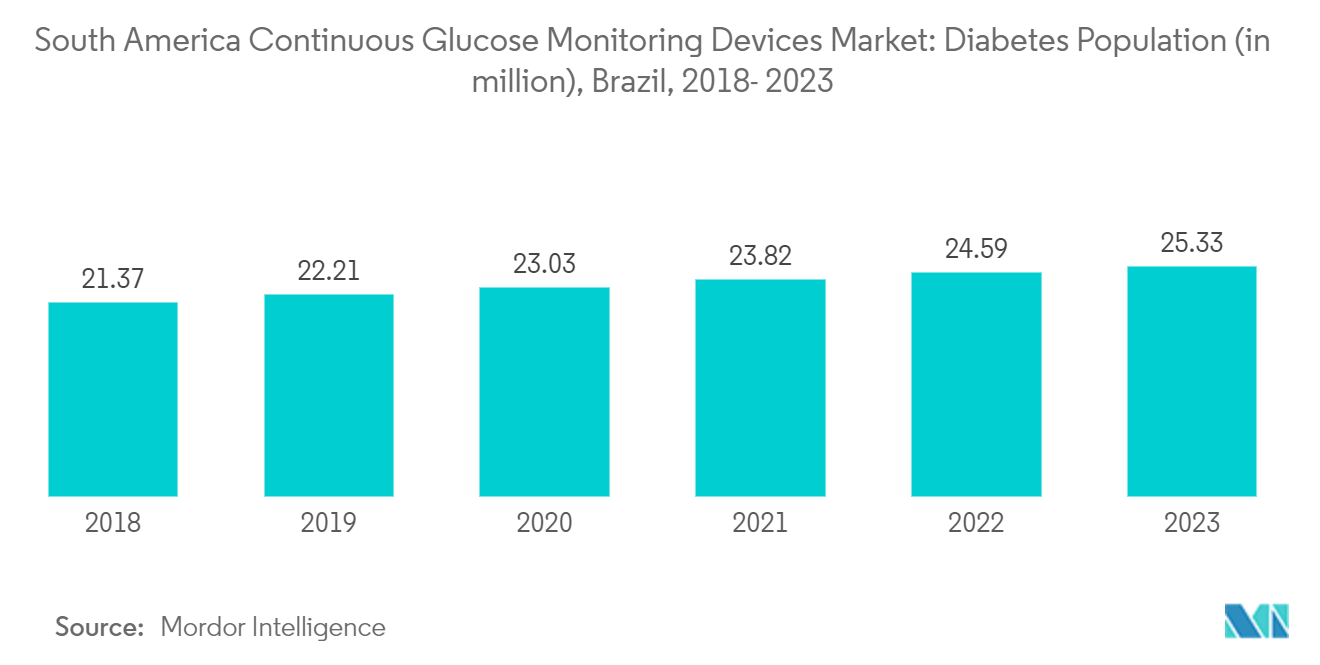Market Trends of South America Continuous Glucose Monitoring Devices Industry
The Sensors Segment is Having the Highest Market Share in South America Continuous Glucose Monitoring Market.
Continuous glucose monitoring sensors detect blood sugar levels using glucose oxidase. Glucose oxidase converts glucose to hydrogen peroxidase, which reacts with the platinum inside the sensor to generate an electrical signal that is sent to the transmitter. The most important component of continuous glucose monitoring devices is the sensor.
During the forecast period, technological advancements to improve sensor accuracy are expected to drive segment growth. For the convenience of diabetic patients, continuous glucose monitoring has become a popular alternative to portable finger-prick glucometers on the market. Furthermore, current continuous glucose monitoring devices can either display trends in blood glucose levels by downloading data or provide a real-time picture of glucose levels via receiver displays. Diabetes already has a disproportionate impact on Mexican Americans.
The use of CGM in mostly Mexican American adults provides important information about blood sugar profiles for people at risk of or living with T2D. These findings could pave the way for new approaches to lowering the risk of developing T2D and better understanding the progression of diabetes in this population. Continuous glucose monitoring (CGM) has numerous advantages for diabetics. However, the majority of CGM research has been conducted on White participants with type 1 diabetes. As a result, we have limited knowledge and experience with CGM in racial/ethnic minority populations with type 2 diabetes (T2D) who do not use insulin.
Thus, owing to the above-mentioned factors the segment is expected to grow over the forecast period.

Brazil is Expected to Dominate the South America Continuous Glucose Monitoring Devices Market.
The Brazilian health system is managed by each state and local health secretariat and is governed by the MOH. Furthermore, in many towns where the public sector is unable to meet people's needs, partnerships with private organizations to increase access to PHC have been established. The Brazilian health system covers medicines through several programs, including a 20% increase in access to essential medicines.
Brazil has an extensive free immunization program. Over the last 20 years, Brazil has faced numerous lawsuits demanding coverage of high-cost drugs used to treat diabetes and other rare or low-prevalence diseases. The diabetic population in Brazil is expected to grow by 74% between 2017 and 2045. Brazil is currently the world's sixth most populous country, with the fourth highest prevalence of diabetes. The Brazilian government is encouraging diabetes patients to take the medication to reduce the country's death rate.
The Brazilian Ministry of Health collaborated with private pharmacies in Brazil to provide diabetes patients with two types of insulin (regular human insulin and isophane insulin or NPH) and three oral antidiabetic medications (5 mg glibenclamide and 500 and 850 mg metformin) for free.
Therefore, owing to the aforesaid factors the growth of the studied market is anticipated in the South America Region.


